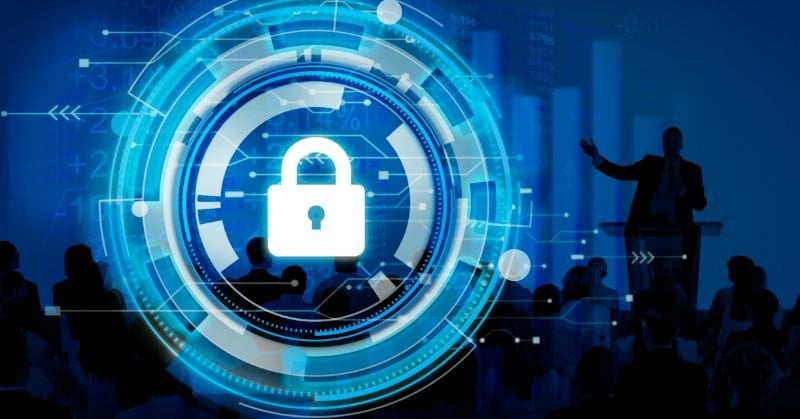In today’s digital era, event Management and Security Information and Event Management (SIEM) software has become indispensable in modern cybersecurity strategies. This article delves into the critical role SIEM software plays in safeguarding digital infrastructures and data.

Understanding SIEM Software
SIEM software aggregates and analyzes activity from various resources across an organization’s IT infrastructure. It provides real-time analysis of security alerts generated by applications and network hardware. By collecting and scrutinizing data from firewalls, antivirus programs, and intrusion detection systems, SIEM software offers a comprehensive view of an organization’s security posture.
Real-Time Threat Detection
One of the foremost benefits of SIEM software is its ability to detect threats in real time. Traditional security measures often fail to keep pace with the sophisticated tactics employed by cybercriminals. SIEM software, however, continuously monitors network activity and flags anomalies that could indicate potential breaches. This proactive approach enables security teams to respond swiftly, mitigating damage and preventing data loss.
Incident Response and Management
Effective incident response is crucial in minimizing the impact of security breaches. SIEM software streamlines this process by providing detailed insights into security events. It helps in identifying the nature and scope of an attack, allowing security personnel to devise and implement a targeted response. Moreover, automated responses can be configured to contain and neutralize threats, further enhancing an organization’s defense mechanisms.
Compliance and Reporting
Adhering to regulatory requirements is a significant aspect of cybersecurity. Many industries are subject to stringent compliance standards such as GDPR, HIPAA, and PCI DSS. SIEM software assists organizations in meeting these standards by maintaining detailed logs of all security events and generating comprehensive reports. This not only ensures compliance but also facilitates audits and forensic investigations.
Enhancing Network Visibility
A major challenge in cybersecurity is the lack of visibility across the entire network. SIEM software addresses this issue by providing a centralized platform that consolidates security information from multiple sources. This holistic view enables security teams to identify vulnerabilities and monitor user activities effectively. Enhanced visibility is critical for detecting advanced persistent threats (APTs) and other sophisticated attacks that may go unnoticed by conventional security tools.
Integration with Other Security Tools
SIEM software is designed to integrate seamlessly with various other security tools, enhancing overall security infrastructure. By correlating data from firewalls, antivirus software, and intrusion detection systems, SIEM provides a unified approach to threat detection and response. This integration ensures that all aspects of an organization’s security ecosystem work in tandem, creating a more robust defense against cyber threats.
Scalability and Flexibility
In today’s dynamic business environment, scalability and flexibility are essential features of any security solution. SIEM software is highly adaptable, capable of scaling up to meet the needs of growing organizations. It can be customized to address specific security requirements, making it a versatile tool in an ever-evolving threat landscape. This scalability ensures that businesses can maintain robust security measures as they expand their operations and IT infrastructure.
Advanced Analytics and Machine Learning
Modern SIEM solutions leverage advanced analytics and machine learning to enhance threat detection capabilities. By analyzing vast amounts of data, these technologies can identify patterns and predict potential security incidents. Machine learning algorithms continuously improve over time, refining their ability to detect anomalies and reducing the occurrence of false positives. This predictive approach allows organizations to stay one step ahead of cybercriminals.
Reducing Mean Time to Resolution (MTTR)
The Mean Time to Resolution (MTTR) is a critical metric in cybersecurity, representing the average time taken to resolve security incidents. SIEM software significantly reduces MTTR by automating many aspects of threat detection and response. With real-time alerts and automated workflows, security teams can quickly address and mitigate threats, minimizing downtime and reducing the overall impact of security incidents.
Cost Efficiency
Investing in SIEM software can lead to significant cost savings in the long run. By preventing data breaches and minimizing the impact of security incidents, organizations can avoid the substantial financial losses associated with cyberattacks. Additionally, SIEM software reduces the need for multiple standalone security tools, streamlining the security infrastructure and cutting down on operational costs.
Challenges and Considerations
While SIEM software offers numerous benefits, its implementation comes with challenges. The initial setup and configuration can be complex and time-consuming, requiring skilled personnel. Additionally, the effectiveness of SIEM solutions depends on the quality of data inputs and the accuracy of correlation rules. Regular updates and fine-tuning are necessary to ensure optimal performance.
Case Studies and Examples
Several organizations have successfully implemented SIEM software to enhance their cybersecurity posture. For instance, a major financial institution deployed SIEM to monitor and analyze transaction data in real time, significantly reducing fraud and unauthorized access. Similarly, a healthcare provider utilized SIEM to comply with HIPAA regulations, safeguarding patient data and ensuring privacy.
The Future of SIEM Software
The future of SIEM software looks promising, with continuous advancements in technology driving its evolution. The integration of artificial intelligence (AI) and machine learning will further enhance the predictive capabilities of SIEM solutions. Additionally, the growing adoption of cloud-based SIEM services will make advanced security accessible to smaller organizations, democratizing cybersecurity.
Conclusion
In conclusion, SIEM software is a cornerstone of modern cybersecurity, providing real-time threat detection, incident response, and compliance reporting. Its ability to enhance network visibility, integrate with other security tools, and leverage advanced analytics makes it an invaluable asset for organizations. As cyber threats continue to evolve, the adoption of SIEM software will be crucial in safeguarding digital infrastructures and ensuring business continuity.




